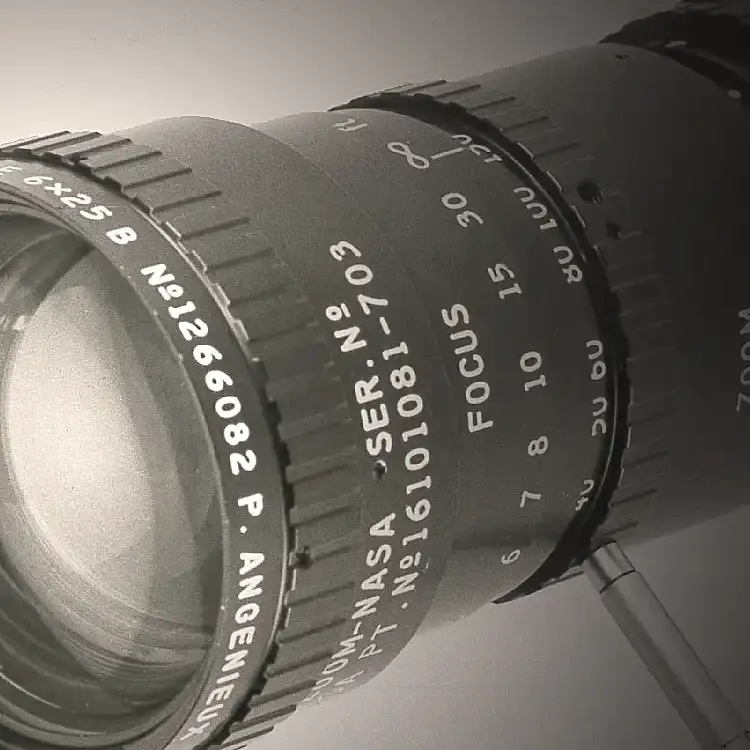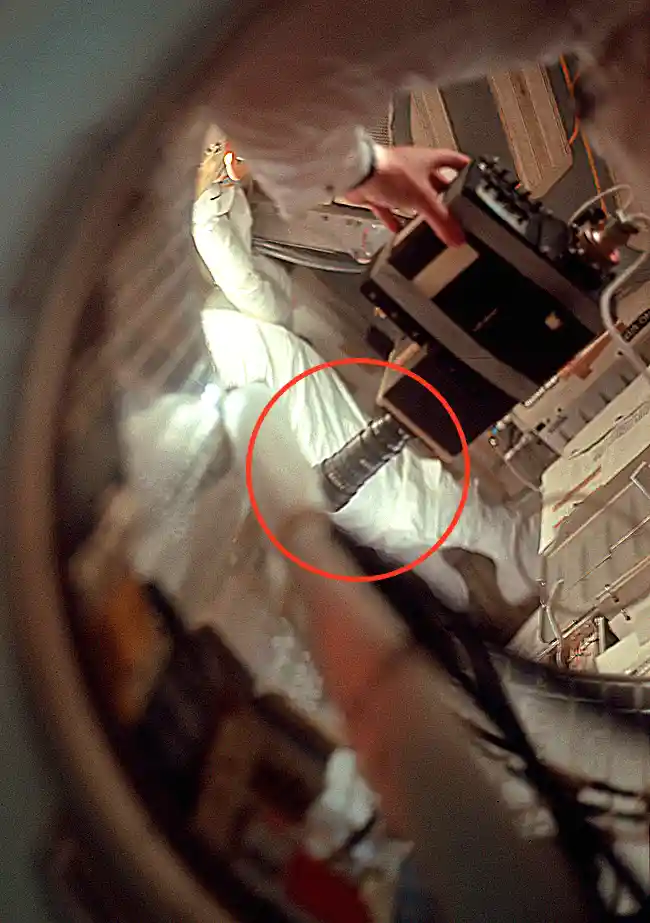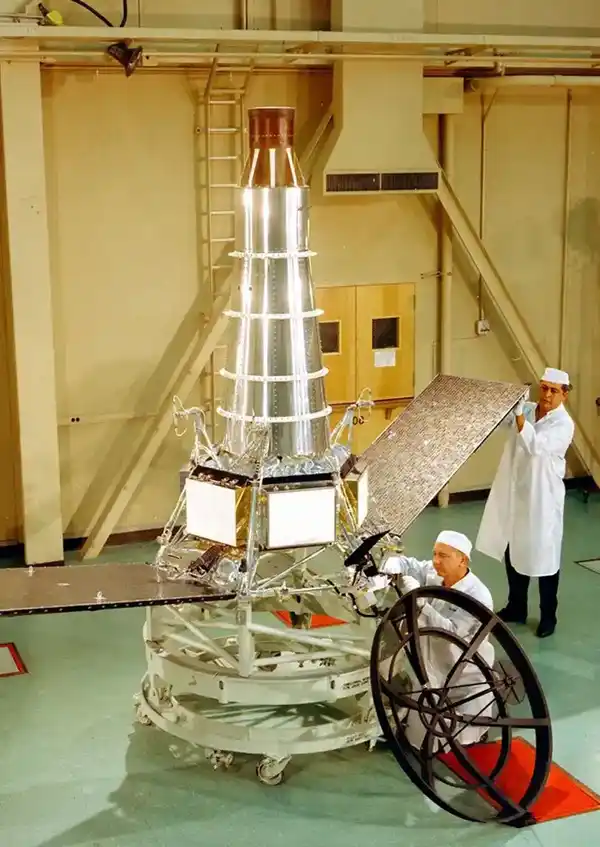 AB Design
AB Design
 AB Design
AB Design

While French-made Angenieux lenses might be best known for serving up the lush, saturated palettes we've seen in the likes of Squid Game, Napoleon and Gladiator II, more than 50 years ago they played a crucial role in NASA's bid to put a man on the moon before the end of the 1960s.
The NASA Angenieux collaboration began in 1961 when a small 25mm lens was used on a series of probes designed to photograph the lunar surface. The collaboration was as vibrant as ever at the end of the decade when an Angenieux zoom lens shot the first color television images broadcast from the moon.
Apollo 10 – launched May 1969 – was NASA's first mission to feature live color TV broadcasts. The broadcasts were made possible thanks to a specially designed Westinghouse camera equipped with a 6X Angenieux zoom lens. The lens had a focal length of 12.5mm to 75mm, but a 2X teleconverter doubled that to an effective focal length of 25mm to 150mm. As well as filming the moon and capturing shots of the Earth, the camera beamed back live footage of spacecraft maneuvers and astronauts working inside the command module.
In lieu of a viewfinder the camera was connected to a three-inch monitor that astronauts could use for aiming and focusing. The photo below (which at first might seem a bit confusing) shows a pair of Apollo 11 astronauts, one of whom has taped the monitor to the top of the Westinghouse camera. For the sake of clarity, the Angenieux lens is circled in red.

A similar setup (with Apollo 10's camera and lens) was used on Apollo 12 for broadcasts from the lunar surface. This was the first time an Angenieux lens had been used on the moon.
Two color television cameras are planned to be carried aboard Apollo 12 – one in the command module and one in the lunar module. Both cameras have been refurbished and modified from previous missions; the Apollo 10 command module camera will be stowed in the LM for lunar surface TV, and the Apollo 11 command module camera will be used in the Apollo 12 command module.
Apollo 12 Press Kit, November 1969On missions 15-17 NASA introduced the Lunar Roving Vehicle (LRV) and, for lunar television, replaced the Westinghouse with an RCA camera. This new camera differed from its predecessor in that both it and the Angenieux lens could be controlled remotely by personnel in Houston. Controls included on/off, pan, tilt and zoom. At the conclusion of each of these three missions the camera was left attached to the LRV so that it could film the lunar module's liftoff. The video below shows the remote tilt and zoom functionality.
The Ranger Program was one of two NASA uncrewed projects whose primary goal was to capture high-resolution photographs of the lunar surface and provide detailed information about its terrain and topography. The program also heralded the start of what would become the long, fruitful NASA Angenieux collaboration.
The Ranger Program was conceived in 1960 and a year later the first of nine flights launched. With the exception of Ranger 1 and 2 (which were essentially test flights), the plan was for the probes to photograph the moon's surface as they descended towards it, and continue doing so until they struck it and were destroyed. The first six flights failed to meet their objectives; only missions 7-9 achieved success.
Ranger 7 – and the two missions that followed – had six TV cameras on board: three were fitted with 76mm Super-Baltar lenses (manufactured by Bausch & Lomb), the other three used an Angenieux 25mm. Ranger 7 was launched in July 1964 on an Atlas rocket from Cape Canaveral and, after a mid-course correction, reached its destination three days later. By the time it crashed into the moon it had transmitted more than 4300 images, the first of which was taken with the Angenieux.
Ranger 7 was a tremendous success. Not only was it the first American probe to capture photos of the moon and the world's first to deliver close-ups of the lunar surface, it restored confidence in the Ranger Program and cemented the NASA Angenieux collaboration. Ranger 8 and Ranger 9 followed, and they in turn were followed by the equally successful Surveyor and Lunar Orbiter programs. Ranger 7 is shown below.

The NASA Angenieux collaboration continued into the 1970s and 1980s with Skylab and the Space Shuttle missions, but it's hard to find specific, NASA-sourced information about Angenieux optics and how they were deployed. All I really know for certain is that NASA equipped the Shuttle crew with a 16mm Arriflex camera that could be fitted with a variety of Zeiss lenses and an Angenieux 5.9mm. An example of the Angenieux is kept at the Smithsonian Air and Space Museum in Virginia.
Another relationship I'm aware of seems to exist between Angenieux and British film director Ridley Scott, with many of Scott's recent movies (pretty much everything from The Martian to Gladiator II) being shot with Angenieux Optimo Primes and/or EZ zooms. Some of these films aren't as strong as Scott's earlier work, but the visuals are always impressive.
Recent top-rated TV shows filmed using Angenieux lenses include Mr & Mrs Smith, Squid Game (both seasons), Amazon's hugely expensive take on The Lord of the Rings, The Queen's Gambit, and HBO's Succession.